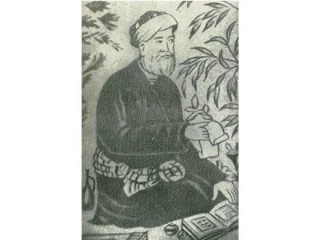
Jami biography
Date of birth : 1414-08-18
Date of death : 1492-11-17
Birthplace : Djam, Herat (now Afghanistan)
Nationality : Persian
Category : Historian personalities
Last modified : 2011-07-15
Credited as : Mystic, writer, poet
Maulana Nur al-Din Abd al-Rahman, called Jami, was born in the district of Djam in the province of Herat in what is today Afghanistan. His father came from the district of Dasht around Isfahan, and thus the first takhallus (poetical name) Jami adopted was Dashti. This he later changed to Jami.
Early in his life Jami was given to a strong interest in mysticism. Contrary to what one might expect, this was quite natural for intellectuals in his day. Mysticism was popular during the time Jami lived, because life in general was in such turmoil. Thus Jami became a follower of the disciple who had succeeded the great saint Baha al-Din Nakshiband, the founder of the mystical Sufi order of Nakshibandis. This was to affect his later writings by means of philosophical innuendo.
The great portion of Jami's life was spent in Herat. He was not a great traveler, like Sadi or Rumi. Apart from two pilgrimages, one to Meshed in Persia and another to the Hejaz in 1472 with a side trip to Baghdad, Damascus, and Tabriz, he stayed at home and lived a quiet, introspective life. It is said that in his later years, after his writings were completed, he suffered from senility and eventually went mad.
The type of work Jami produced is considerable and varied. It is typified by a depth and variety of knowledge and a finely honed mastery of diction and style. Although he wrote a great deal of prose, it is for his poetry that he is known mainly. He used the theme of the court epic to great benefit as had his predecessor Firdausi. Most famous of these are his stories "Salaman and Absal," "Yusuf and Zulaikha," and "Laila and Majnun." These are three of the seven long tales that make up his famous literary series called The Seven Stars of the Great Bear. All of these works appear on first observation to be love stories of young couples. But when considering the serious nature of Jami's mysticism, it is realized that in fact these works are meant to be read as object lessons for teaching pupils a unique Sufi way to approach God. Like many of his contemporaries, Jami must be read on many philosophical levels.
In the field of lyric poetry he wrote late in life three diwans (collections of poetry): Beginning of Youth (1479), Central Part of the Chain (1489), and Close of Life (1491). Finally he wrote in prose the Baharistan, an imitation of Sadi's Gulistan, and the Zephyrs of Intimacy, a compendium of biographies of many Sufi saints.
Thus it may be said of Jami that he brought a fresh, subtle, and graceful style to his writing. His theme was usually on a philosophical-level, pantheistic mysticism. He deserves comparison with the greatest of the Sufi poets. His death in Herat marked the passing of the last great mystical Persian poet.
Jami is represented in English translation in James Kritzeck, ed., Anthology of Islamic Literature (1964). The best biographical sources are Edward G. Browne, A History of Persian Literature under Tartar Dominion, A.D. 1265-1502 (1920), and Jan Rypka, History of Iranian Literature, edited by Karl Jahn (1956; trans. 1968).
















